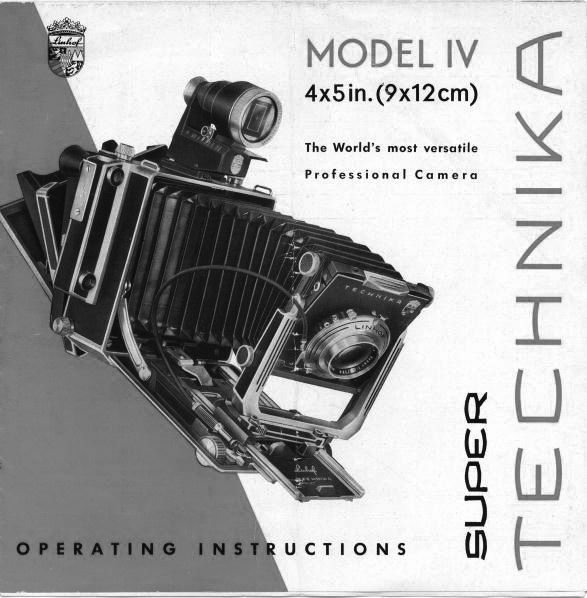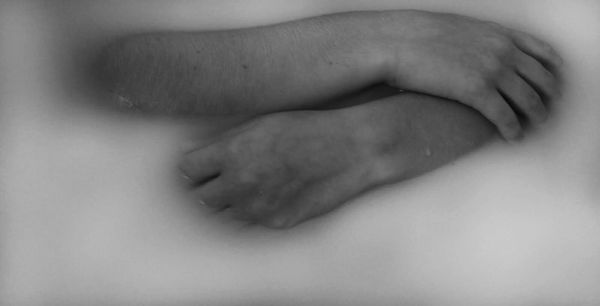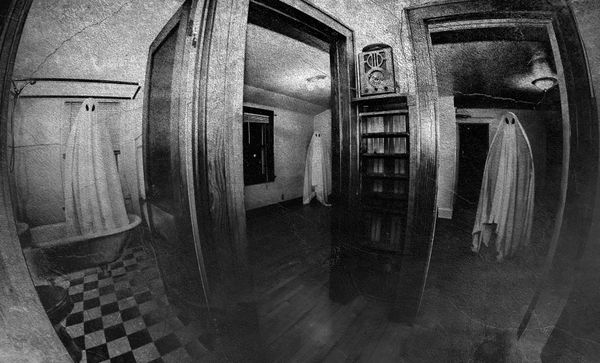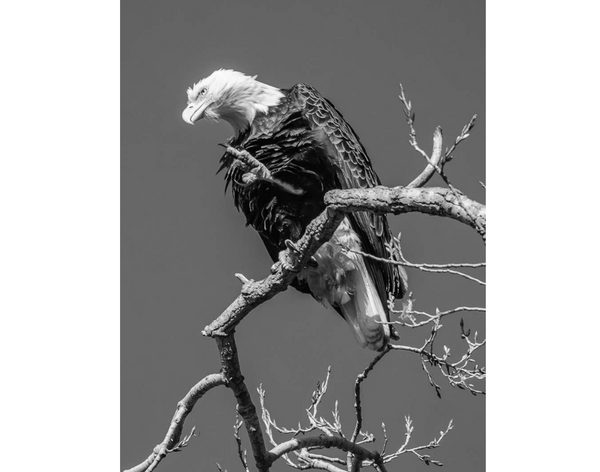One Legged Cardinal
by Almon Benton
It was the first warm day of the year. Unseasonably warm for February, which meant people were going to be outside enjoying this temporarily warm weather and sunshine, myself included, before much colder temperatures returned. I decided to head downtown Appleton for a quick walk bringing along my Linhof Technika IV large format 4x5 Camera. Many 4x5 cameras need to be set on tripods, framed by looking through the ground glass on the rear of the camera, then inserting your film holder, measuring your light, and then taking your shot, but not this one. The Linhof Technika IV has a calibrated rangefinder linked to the Schneider - Kreuznach Xenar 1:4.5/150mm lens on the right side of the camera, and a parallax correcting viewfinder mounted into the cold shoe on top of the camera. This allows the camera to be set up and ready to shoot off hand with the film holder in place and dark slide removed without the normal downsides of a traditional large format camera.
While walking downtown, I was feeling a little defeated at attempting to capture a moment in time with this camera. At eight pounds, and much larger than any other camera, people walking down the street instantly noticed it, and became wary or curious, unlike the small rangefinders I typically use that go unnoticed by most, and I didn’t know how much longer I wanted to carry this heavy camera around. I was hoping this camera would get me out of my normal comfort zone and lead me into a new subject and then, I chanced upon three young men who had used a skateboard to prop up a grate making it into a perfect ramp to skate off of. Being an old skateboarder myself, I knew I had the perfect opportunity to set up and take a frame with this camera. They were a bit leery at first, wondering if this adult was going to tell them to move on, but I earned their trust and they gave me permission to take the photograph.
With this camera, you need an external light meter, I use an incident meter. Unlike a reflectance meter that relies on the light bouncing off your subject back to your camera, this meter reads the light that falls on to the subject. When you measure the light, not the subject, the tones fall naturally into place. After measuring the light based on the ISO speed of my film, I decide on a shutter speed and aperture size. These need to work together based on my light reading to give the film the correct amount of light. If I open the aperture, more light will be allowed in the lens, it will shorten my depth of field making objects in front of and behind the subject to be out of focus, which I would then need to increase the shutting speed. A faster shutter speed would cause the subject to freeze in time, with a slower shutter speed catching more of their movement where fast things would turn into a blur. I decided for this photo that I wanted more in focus, closing down the aperture to f/22, and setting the shutter speed to 1/60th of a second, allowing for some motion blur.
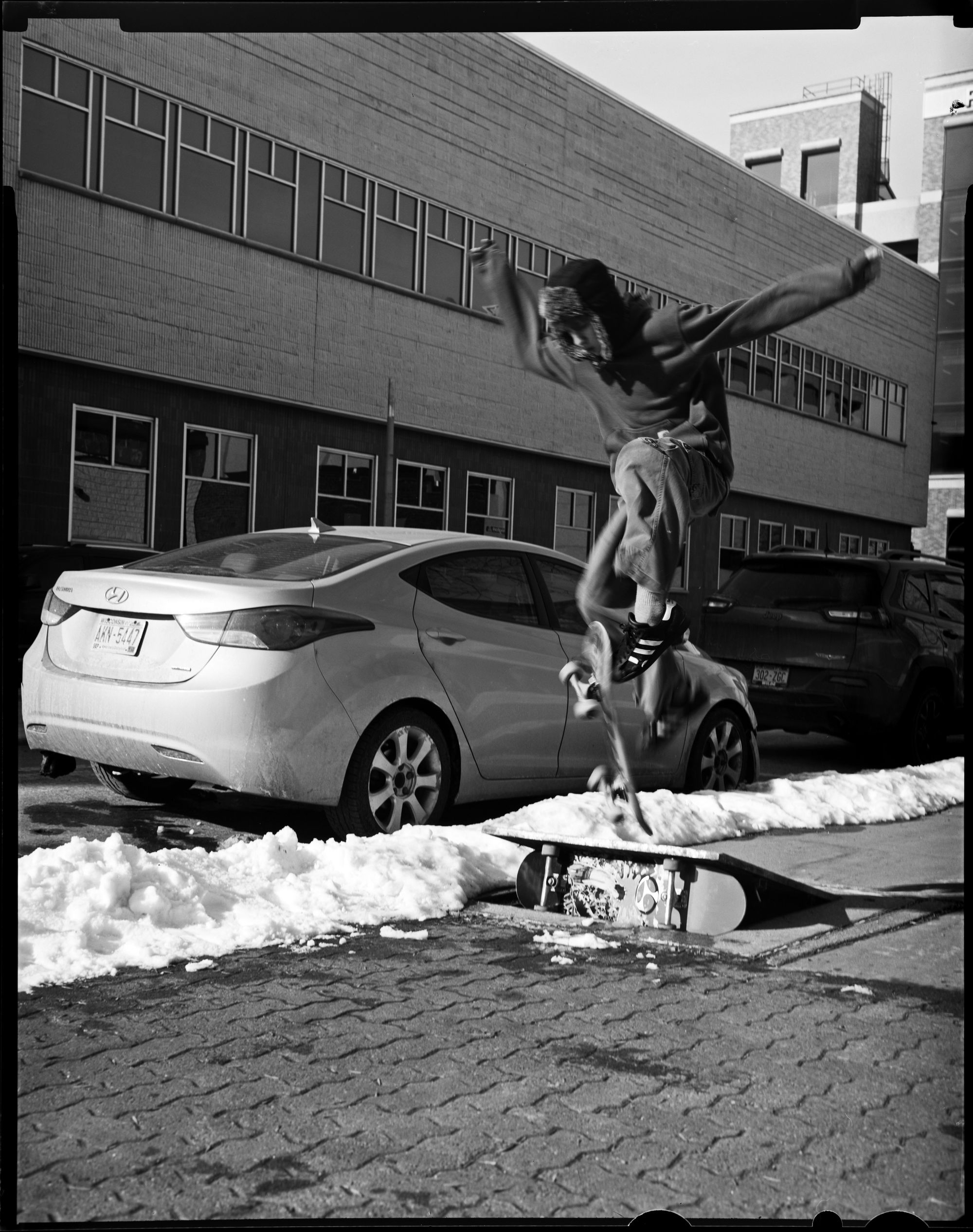
Then you look though the rangefinder, match the image in the small circle to that of the larger image that encompass it. This camera, the rangefinder is coupled to the lens, so there was no need to further set the distance for the ramp and young skateboarder to be in focus. Now I set the viewfinder to the distance the rangefinder calculated, frame the ramp and wait for the decisive moment. 4x5 film produces an image close to fifteen times larger than a thirty five millimeter negative, but you have one exposure vs up to thirty-six. Knowing when not to take a picture becomes just as important as knowing when to take one. I wanted to wait for the apex of the jump, when both rider and skateboard are off the ground, yet still connected. I waited and watched, to get a sense of what trick they were going to attempt, and then, at the right moment, I pressed the shutter.
I knew at that moment, I had the shot I was hoping to get, it was now time to develop the single sheet of film. This was a sheet of Ilford HP5 that I measured for ISO 800 and developed in Kodak Xtol for eighteen minutes. Exposure controls the shadow values, development controls the highlight detail. While shadow values stay relatively constant, the densities in the negative that represent highlights are increased when you develop longer. To say it in another way, you increase negative contrast by lengthening development and decrease contrast by shortening the film development.
If I could tell you this whole story in words, I would not have needed to take the photograph. I won’t tell you if he landed the kickflip, but I will tell you these young men were kind and brave, and kind, brave people live best and beyond reproach.
Find images of Almon’s on Instagram @ginnungagap____

